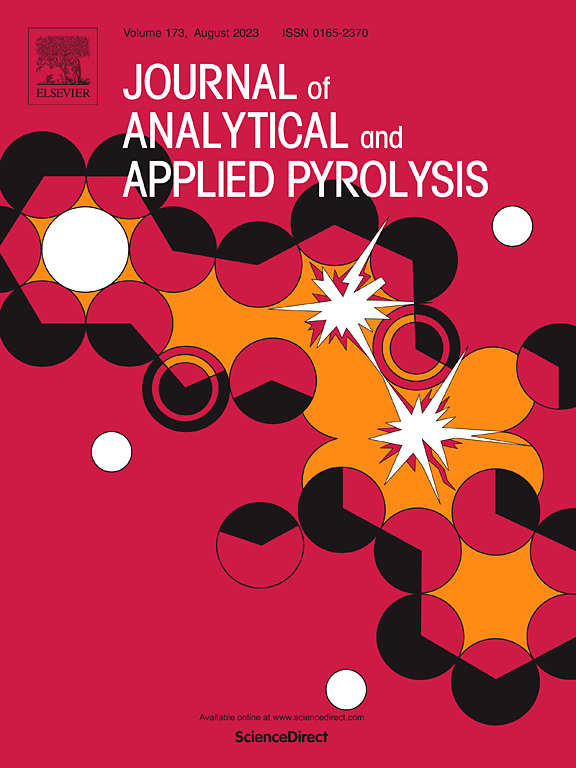Thermal degradation pathways in multi-component epoxy composites
IF 5.8
2区 化学
Q1 CHEMISTRY, ANALYTICAL
引用次数: 0
Abstract
In this study, the thermal degradation behavior of epoxy composites formulates with a bisphenol A (BPA) and bisphenol F (BPF) resin blend, a reactive alkyl glycidyl ether diluent, and quartz filler, cured with a cycloaliphatic amine hardener was investigated. Thermogravimetric analysis (TGA) and pyrolysis-gas chromatography/mass spectrometry (py-GC-MS) were employed to explore the degradation pathways and identify the key pyrolyzates. The results revealed that BPA and BPF degrade through distinct but interrelated mechanisms, producing major pyrolyzates such as phenol, BPA, and xanthene. The reactive diluent significantly influenced the pyrolysis profile by introducing unique long-chain hydrocarbons, alcohols, and ethers because of its incomplete incorporation into the polymer matrix. Despite its inert nature, the quartz filler reduced the abundance of pyrolyzates and increased the residual mass, improving the thermal stability of the composite without altering the degradation pathways. This study highlights the complex interplay between resin chemistry, reactive diluents, and fillers in determining thermal behavior. These insights are essential for optimising epoxy composite formulations to enhance their thermal stability and durability for high-performance applications.
多组分环氧复合材料的热降解途径
在本研究中,研究了双酚a (BPA)和双酚F (BPF)树脂共混物、反应性烷基缩水甘油酯醚稀释剂、石英填料、环脂肪胺固化剂固化的环氧复合材料的热降解行为。采用热重分析(TGA)和热解-气相色谱-质谱分析(py-GC-MS)对其降解途径进行了探索,并确定了主要热解产物。结果表明,双酚a和双酚f通过不同但相互关联的机制降解,产生主要的热解产物,如苯酚、双酚a和蒽。反应稀释剂由于不完全结合到聚合物基体中,引入了独特的长链烃、醇和醚,从而显著影响了聚合物的热解特征。尽管石英填料具有惰性性质,但它降低了热解产物的丰度,增加了残余质量,在不改变降解途径的情况下提高了复合材料的热稳定性。本研究强调了树脂化学、活性稀释剂和填料之间复杂的相互作用,以确定热行为。这些见解对于优化环氧复合材料配方至关重要,以提高其高性能应用的热稳定性和耐久性。
本文章由计算机程序翻译,如有差异,请以英文原文为准。
求助全文
约1分钟内获得全文
求助全文
来源期刊
CiteScore
9.10
自引率
11.70%
发文量
340
审稿时长
44 days
期刊介绍:
The Journal of Analytical and Applied Pyrolysis (JAAP) is devoted to the publication of papers dealing with innovative applications of pyrolysis processes, the characterization of products related to pyrolysis reactions, and investigations of reaction mechanism. To be considered by JAAP, a manuscript should present significant progress in these topics. The novelty must be satisfactorily argued in the cover letter. A manuscript with a cover letter to the editor not addressing the novelty is likely to be rejected without review.

 求助内容:
求助内容: 应助结果提醒方式:
应助结果提醒方式:


